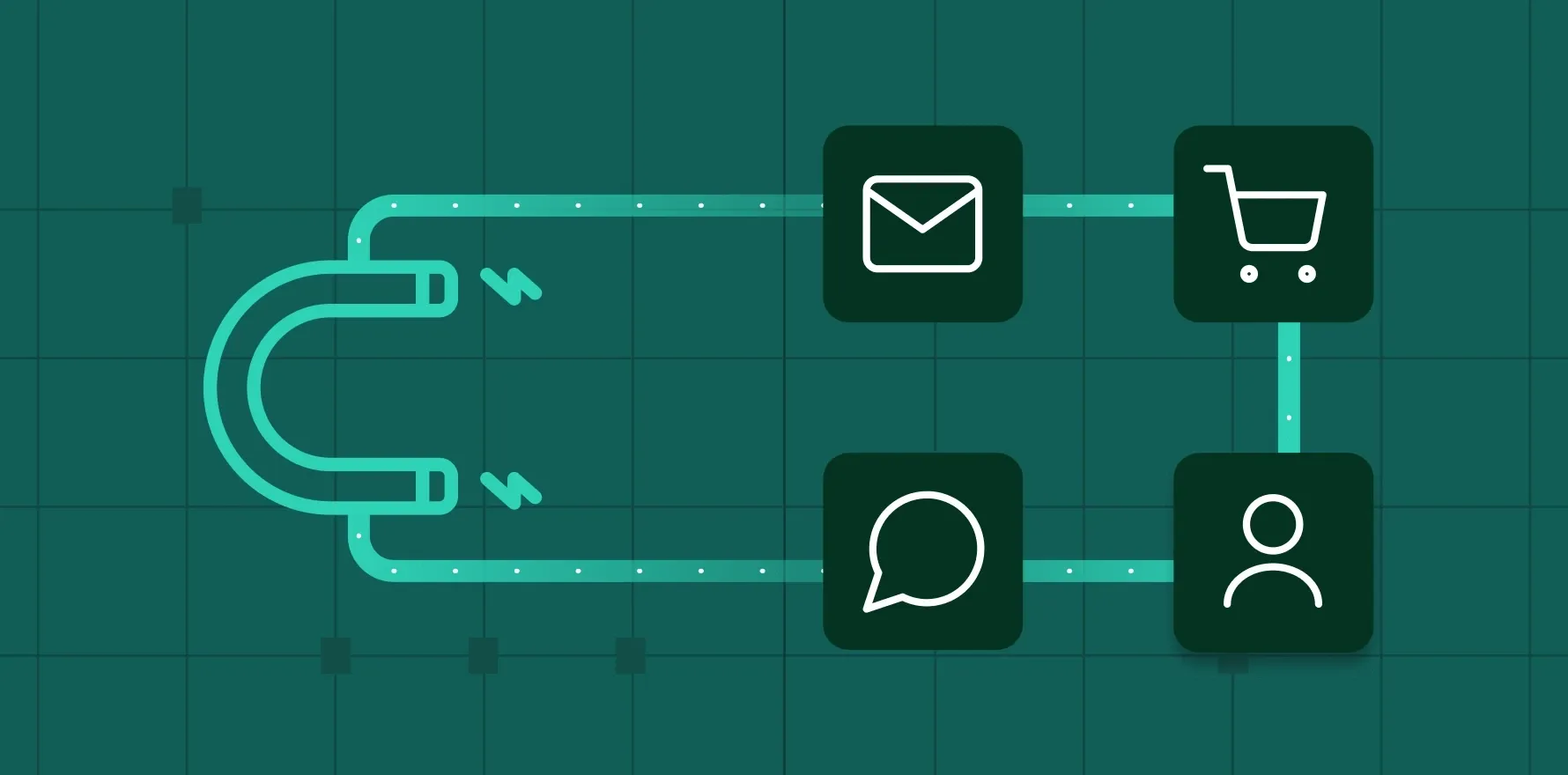Did you know that a 5% increase in customer retention leads to a 25% increase in profits? If you want to get in on the wonders of retention marketing for your ecommerce business, we have you covered. Read on to understand how you can ensure that your customers keep coming back for more.
Let’s start with some statistics –
- It costs five times more to attract a new customer than to retain an existing one.
- An average repeat customer spends 67% more than a new customer.
- While the probability of selling to a new customer is 5%-20%, it is a staggering 60%-70% with existing customers.
What do these glaring numbers tell us? That customer retention is an essential component of your marketing toolkit. It also has a high scope of return on investment. Naturally, it is one of the most important tools in the modern marketer’s arsenal.
In this blog post, we will deep dive into ecommerce retention marketing. We will see how it differs from acquisition marketing, and what metrics and strategies you can use to start your ecommerce retention marketing journey.
First of all, what exactly is ecommerce retention marketing?
Ecommerce retention marketing focuses on turning your existing customers into repeat customers for your ecommerce business. You used unique ad campaigns to bring customers on board, and now you need to make them come back for more purchases.
Essentially, it is the process of turning one-time customers into loyalists.
Retention Marketing vs. Acquisition Marketing – when to do what?
Acquisition marketing, as you might have already guessed, is a combination of marketing initiatives with the sole objective of gaining brand new customers.
You need to focus on acquisition marketing entirely if you are just starting out. This is because it is critical to build a healthy stream of customers before pivoting to trying to retain them. Bookmark this guide for a time when you have a sizable customer base.
But, are you now an ecommerce store that has already gained some traction?
This is when you should consider deploying customer retention marketing strategies simultaneously with your customer acquisition efforts.
How retention marketing benefits ecommerce stores
Retention marketing gives you 25% profit off of a single customer, like we mentioned in the beginning. Naturally, it has many benefits in the long run.
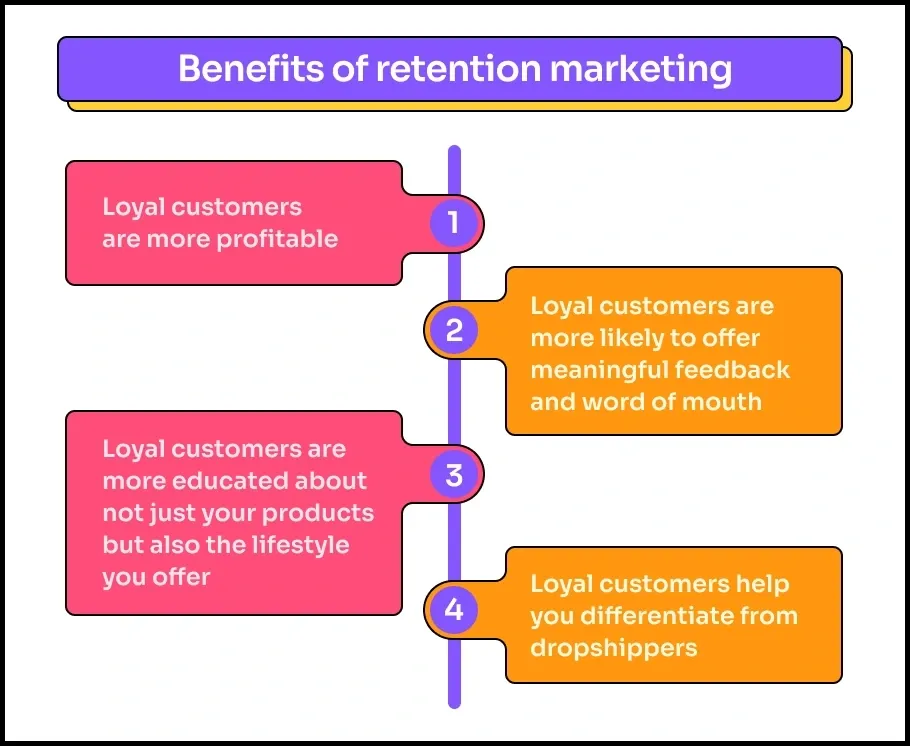
Benefit 1: Loyal customers are more profitable
Your most loyal customers – specifically those who make regular purchases from your brand – spend a staggering 67% more than new customers. This translates to higher customer lifetime value. Loyal customers are also 50% more likely to try your new products and offerings because they already trust your brand.
Benefit 2: Loyal customers are more likely to offer meaningful feedback and word of mouth
Reviews and feedback are the backbone of a growing business. There are two elements in this feedback loop. One, your most loyal customers are more likely to offer feedback instead of switching brands. This helps you improve your offerings not just for existing customers but also for new ones. Two, your new customers are more likely to believe the positive reviews your most engaged customers leave on your site. Also, with brand loyalty comes a host of referrals as customers are likely to “advertise” their experience with your brand to their family and friends. Creating a positive feedback loop brings in new customers while focusing on your retained customers.
Benefit 3: Loyal customers are more educated about not just your products but also the lifestyle you offer
When your loyal customers spend time with your brand, they organically become part of your community. They understand your products and offerings better than new customers, and become vocal advocates not only of your brand but also the lifestyle you offer. This has a snowball effect – and is a strong marketing tool to grow your community and subsequently, your business revenue.
Benefit 4: Loyal customers help you differentiate from dropshippers
A dropshipper acts as an intermediary between the customer and the manufacturer. It typically provides logistical support to ship products directly from a warehouse to the customer. Marketplaces like AliExpress or Alibaba are some known dropshipping brands. Customer retention is usually not a top agenda for most dropshippers who usually only care about one-time conversions. It is critical for fledgling DTC brands to differentiate themselves from dime a dozen dropshippers. One of the easiest ways to achieve this is by building a community of loyal and engaged customers. Naturally, retention marketing becomes even more important at a time when DTC brands are competing with dropshippers for customer’s attention.
How to measure retention marketing efforts
You must have heard of the age-old adage: “You can’t manage what you can’t measure”. This is especially true for modern marketing strategies and retention marketing is no different.
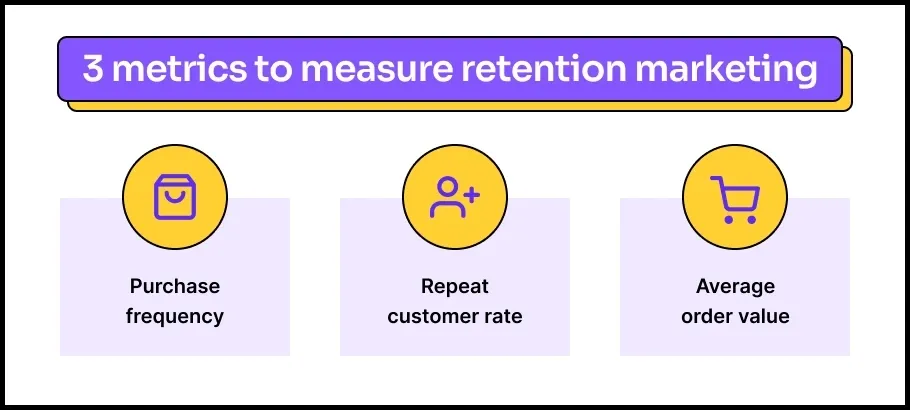
We have defined three critical metrics that measure the success of retention marketing strategies:
Metric 1: Purchase frequency
This refers to how often your customers return for another purchase. Identify the number of orders placed and unique customers (one-time purchasers) for the chosen period.
The number of orders placed/number of unique customers will give you the purchase frequency.
A great way to boost this metric is by turning your Shopify store into a mobile app, allowing customers to shop with ease and receive personalized notifications that bring them back.
Metric 2: Repurchase Rate
This indicates the quantum of customers who chose to make a second purchase.
Identify the number of customers who have made more than one purchase in the chosen period, and also ascertain the number of unique customers.
[Number of customers who purchased more than once/Number of unique customers]x 100] will give you your repurchase rate.Metric 3: Average Order Value (AOV)
AOV is the average amount a customer spends in a single transaction.
Divide your yearly revenue by the number of orders your store has processed and completed in the chosen period. This figure is your AOV.

Retention marketing success factors
You now know the What and the Why. Now let’s get to the How.
Retention marketing requires consistent communication with your customers. It also requires value exchange – what can you give your customers to keep them coming back? Let’s see the four key success factors you need in your arsenal to strengthen your retention marketing:
1) Design a single source of truth about your customers
You cannot achieve your marketing goals with your customer data sitting in silos across different systems and channels that you use for your advertising, sales, or customer service.
With a single source of truth for all your customer data, your DTC brand has an opportunity to create a seamless and unified customer experience across all channels. When you orchestrate your entire customer data on a single, accessible data platform, you will be able to deliver an experience consistent with each customer’s shopping history, channels, preferences and more. This allows your marketing team to take hyper-personalized actions, like sending truly relevant emails and SMS to nudge each customer into making a purchase from you. Essentially, you are automating customer delight – and that is a critical success factor for all consumer-facing brands of our times.
2) Deliver strong customer service
No matter how much you spend on your retention marketing strategies, customers don’t forget a sub-optimal experience. A friendly, responsive, and efficient customer care team can help your customers feel heard and understood.
Give your customers strong value beyond just the products they purchase. For example, help them set up the product they bought and resolve any challenges they may face. This value is critical to build a personal, engaged relationship with customers. Train your customer service team to go above and beyond, and give your customers a reason to keep coming back for more.
3) Reward repeat purchases
Rewards. Discounts. Points. Bonuses. Exclusive access. Gamification. There are so many ways in which you can encourage repeat purchases.
Consistently motivating your customers to purchase from you again and again is your most accessible route to turning every customer into a repeat customer. Your rewards will make your customers feel valued and at the same time, get a bigger bang for their buck.
For example,Algenist, a global skincare brand, has made its rewards program rather exclusive. It offers exciting rewards like early access to sales and VIP events for its most loyal shoppers, or those that belong to the highest tier in its loyalty program. Naturally, it motivates new shoppers to spend more to reach the top tier and get more exclusive rewards.
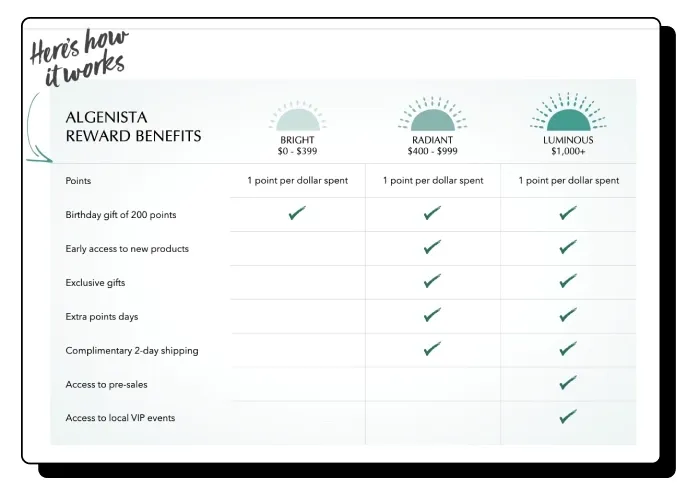
4) Cross-sell and upsell
Deliver a healthy supply of recommendations to your shoppers, based on their first order. Cross-selling and upselling are the easiest ways to encourage repeat purchases. For example, if your shopper ordered a smartphone from your store, they might need screen guards too. Remind them so that they don’t forget.
Target has a great approach to cross-selling on its website. Like Amazon, Target has a “Frequently Bought Together” section on their website, where they urge customers to “complete the set” for the furniture they bought.
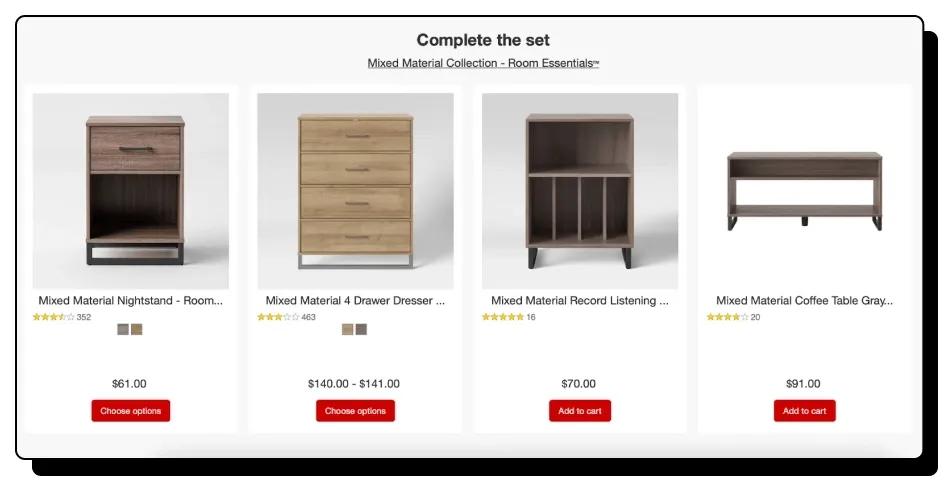
However, it is important that you manage purchase recommendations smartly and don’t spam your consumers. Spamming will just turn them off and you might lose a customer forever.
5) Leverage personalized omnichannel marketing to be top of mind
In the cluttered ecommerce market, being top of mind is critical for successful retention marketing. Design smart and highly personalized omni channel campaigns to keep your brand in your customer’s mind. Birthdays and anniversaries, abandoned cart reminders, cross-selling and upselling, discounts and offers are all great things to include in your omnichannel strategy. But remember, it is important that your omnichannel strategy is hyper-personalized and you are not just spamming your customers with content they don’t need or care for.
Urban Ladder, an Indian furniture retailer, does a great job of topical email marketing. On Sundays, they remind you to rest well and show you furniture that would help you do that. On weekday evenings, they remind you of their super-comfortable recliners. On Monday mornings, they want you to complete your Work From Home set up.
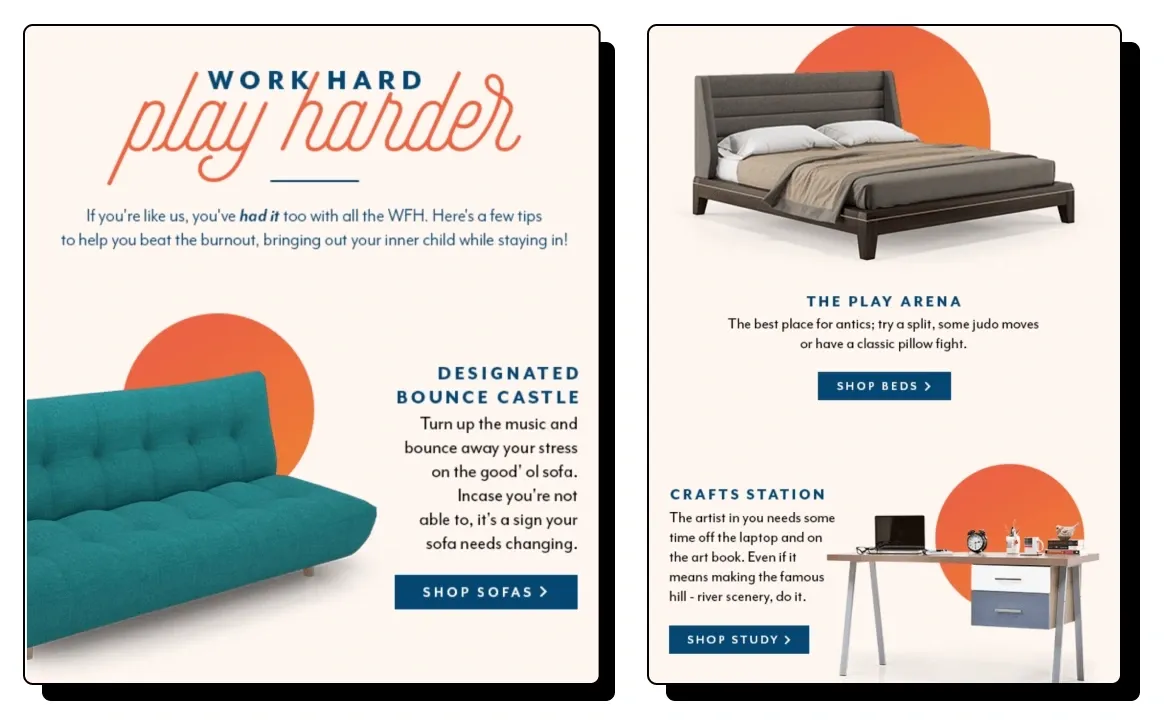
What is even better is that now, you can automate almost all of the processes in your email marketing strategy, thus making this a partly passive but valuable success factor for retention marketing.
Ready to build your retention marketing engine?
As part of the product development process at Lifesight Engage, we have spent the last few months speaking to ecommerce marketers to understand their pain points in building a strong retention marketing engine.
We will soon be ready to tell you all about how we are solving these pain points. Sign up for early access and let’s set you up for a hyper-successful retention marketing journey.
You may also like
Essential resources for your success
